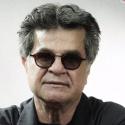Although The Tribe is disquieting, seeing it at home rather than experiencing the full immersion of a cinema screening raises questions of what gives it its impact. theartsdesk’s review coinciding with the theatrical release pinpointed what makes director Miroslav Slaboshpitskiy’s strange Ukrainian film tick: from its use of sign language to its commentary on Ukraine. But are there individual stylistic elements which leap out as signifiers of its singularity?
Time will tell whether or not Slaboshpitskiy can follow his first full-length feature with another film as striking, and whether working with speech will dilute his technique. Sign-language and its brutal atmosphere aside, revisiting The Tribe reveals it to be like a long-form dance piece. It is choreographed. If costumed otherwise and set elsewhere, the initiation fight sequence (main picture) could be the work of Jerome Robbins. It is that precise. Though there is no soundtrack music as such – a concrête approach is adopted for the sound bed – the actions and movements mesh with the sounds of feet or vehicles on the move and the cityscape. As the camera trails a group of youths rushing down a corridor like scuttling cockroaches, they move as one, as if executing dance steps. This then is crucial to The Tribe’s impact: its use of the human form in motion, and the relation of one character’s movements to those of another. Although he studied film direction, it feels as if Slaboshpitskiy has worked in theatre.
The three short on-set extras on the DVD release include one with the director instructing his cast through a sign-language translator. It is evident he has precise ideas about where the characters should be, and how they interact with each other. The Tribe is a major film and has to be seen. Slaboshpitskiy has a very particular style and is potentially a major director. Keep an eye out for what he does next.














Add comment